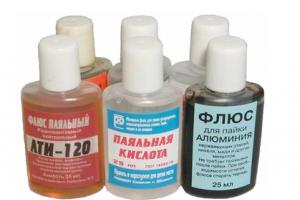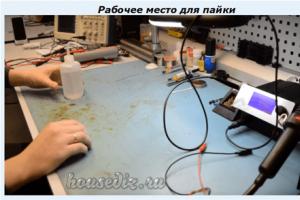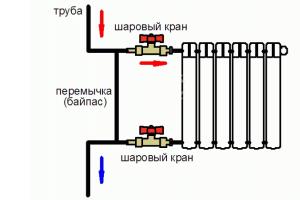Latin name: Fastum gel
ATX code: M02AA10
Active substance: Ketoprofen
Manufacturer: Berlin-Chemie/Menarani,
Germany
Conditions for dispensing from a pharmacy: Over the counter
“Fastum Gel” is an ointment for topical use. Refers to anti-inflammatory non-steroidal drugs.
Composition of the drug
The active ingredient is ketoprofen, the gel consists of 2.5 mg of ketoprofen and additional components: carbomer, ethanol, neroli oil and lavender oil, tromalin, purified water.
Medicinal properties
The active ingredient ketoprofen is well absorbed into the skin, thanks to which it helps to remove inflammation and has an analgesic and anti-exudative effect. Removes swelling of the joints, morning stiffness, and significantly reduces pain. The ointment is absorbed rather slowly, the highest concentration of the substance is observed 6-8 hours after use. The half-life is about 2-3 hours. The drug is excreted through the kidneys.
Indications for use
“Fastum” gel is prescribed for the following ailments:
- Various types of injuries (bruises, dislocations, sprains and muscles)
- Muscle stiffness
- Lumbago
- Joint diseases
- Pain in the muscles
- Ligament inflammation
- Osteochondrosis with radicular syndrome
- Bursitis
- Sciatica
- Some types of myalgia.

The average price is from 340 to 400 rubles.
Release form
The gel is available in special tubes of 30, 50 or 100 g, packaged in cardboard packaging along with instructions. It has a transparent appearance, practically no color with a pleasant smell, non-greasy.
Mode of application
The ointment is used externally. To do this, apply a little gel to the affected area and lightly rub into the skin. The procedure is repeated 1-2 times a day. The duration of treatment is 10-14 days; prolonged use is undesirable. If there are no contraindications, then to improve the result it is possible to use the product in combination with physiotherapy.
Pregnancy and breastfeeding
In the first three months of pregnancy, Fastum Gel is not allowed to be used. As for the rest of the period, the ointment must be used with extreme caution and only under the close supervision of the attending physician. If you are breastfeeding, you should also avoid using the gel.
Contraindications and precautions
The ointment is contraindicated in the following cases:
- Skin damage
- Dermatitis and eczema
- Bronchial spasms, urticaria, rhinitis that occur with the use of acetylsalicylic acid.
- Lactation and childbearing
- Increased sensitivity to gel components.
The medicine is not allowed to be used by children under 12 years of age. It should be practiced with caution in diseases of the digestive system, acute kidney and liver dysfunction, heart failure, and bronchial asthma. In addition, it is necessary to keep the ointment from penetrating mucous membranes, damaged skin and eyes. It is better not to use airtight dressings. The gel does not affect vehicle control.
“Fastum Gel” is prescribed with extreme caution in severe forms of renal failure and in old age.
Interaction with other medications
With the parallel use of drugs that affect photosensitivity, their effects may be enhanced.
Patients taking coumarin anticoagulant medications simultaneously with Fastum Gel are recommended to be observed by a specialist.
Side effects
Among the adverse reactions that can most often be diagnosed:
- Local manifestations: dermatitis due to an allergic reaction, photodermatitis, purpura, eczema.
- Systemic manifestations: urticaria, swelling, stomatitis, skin rash.
Overdose
No cases of dose overdose were observed. If the drug gets inside, there is a possibility of adverse reactions, for which systemic therapy is prescribed.
Storage conditions
Store in a dark place, prohibited for children. Storage temperature is from 15 to 25 degrees Celsius. Shelf life: 5 years.
Analogs
Lek, Slovenia
Price from 370 to 450 rub.
"Ketanol" refers to medications that actively eliminate the inflammatory process and pain. Recommended for joint ailments, pain syndromes due to lumbago, muscle and tendon injuries. The active ingredient is ketoprofen.
pros
- Effectively copes with pain
- Can be combined with other medications
Minuses
- Many contraindications and side effects
- Does not restore cartilage tissue
- Contraindicated for children.
 « «
« «
AKRIKHIN, Russia
Price from 150 to 200 rub.
"Bystrum Gel" is a domestic drug that belongs to the non-steroidal group of drugs. Helps eliminate inflammation and cope with pain in joints and muscles.
pros
- Helps in the restoration of cartilage tissue
- Does not cause skin irritation or redness
- Well absorbed
- Acceptable price
Minuses
- In case of severe pain, it should not have any effect.
- There are many adverse reactions.
 « «
« «
Vertex, Russia
Price from 30 to 50 rub.
"Ortofen" is an NSAID, effective for pathologies of the musculoskeletal system. The active substance is diclofenac.
pros
- Helps quickly relieve pain and inflammation.
- Low cost
Minuses
- Not recommended for long term use
- A considerable number of side effects
- Contraindicated during pregnancy.
Fastum gel is a product for external use used to relieve pain in muscles, joints, tendons and ligaments due to injuries of various kinds: dislocations, sprains and bruises. When the drug is applied to the skin, the active substance, ketoprofen, reaches the area of inflammation and has a local effect on the affected areas, eliminating pain. Excipients (carbomer 940, ethyl alcohol, lavender oil, neroli oil, diethanolamine, distilled water) provide the consistency and pleasant smell of the medicine. The drug is available in tubes of 20, 30, 50 or 100 g.
Indications
Direct indications for the use of fastum gel are inflammation and pain of various origins:
- bruises, dislocations, muscle strains;
- rheumatism, osteochondrosis, osteoarthritis;
- rheumatoid arthritis and periarthritis;
- gout symptoms;
- ankylosing spondylitis;
- radiculitis, sciatica, myalgia;
- synovitis, tenosynovitis, tendinitis, bursitis;
- phlebitis, thrombophlebitis of superficial veins, lymphangitis.
The average course of treatment with the drug is usually about 10 days. If pain persists, you should definitely consult a doctor - using the gel without an appropriate prescription for more than 14 days is strongly not recommended.
When using fastum gel, certain precautions should be observed. Avoid contact with damaged skin, open wounds and mucous membranes; apply the drug using an applicator, do not apply sealed bandages to the treated areas, and, of course, wash your hands thoroughly after the procedure or wear surgical gloves.
Analogs
Currently, fastum gel is one of the most popular drugs for relieving pain caused by inflammatory processes during hypothermia, post-traumatic pain and complex treatment of osteochondrosis and radiculitis of the lumbosacral region.
However, if you pay closer attention to the composition of fastum gel, it becomes clear that in essence we have before us a simple anti-inflammatory and analgesic cream based on ketoprofen.
The list of fastum gel analogues is quite extensive.
The same amount of ketoprofen contains:
- artrum gel (price from 70 rubles),
- bystrumgel (from 170 rubles),
- valusal (from 110 rubles),
- ketoprofen (from 55 rubles),
- oruvel gel (from 150 rubles),
- ultrafastin gel (from 90 rubles),
- febrofid gel (from 160 rubles),
- flexen (from 135 rubles),
- fort-gel (from 70 rubles).
The price depends both on the country of origin - Russian analogues are noticeably cheaper - and on the popularity of the brand.
It is worth paying attention to generics that differ in the dosage of the active substance. For example, at a cost of 240 rubles, ketonal cream contains twice as much ketoprofen (5%). Artrosylene gel, which has a similar amount of active ingredient, can be found for 160 rubles.
Ortofen ointment contains slightly less active substance (2%), however, compared to fastum gel, its cost is almost 10 times lower. The price for a tube of minimum volume is only 25 rubles.
Depending on the symptoms, you can pay attention to other drugs that differ in release form, but also contain ketoprofen: tablets, capsules, granules for preparing solutions and solutions for injections.
Contraindications and side effects
The main contraindication is hypersensitivity or individual intolerance:
- ketoprofen,
- acetylsalicylic acid and its derivatives,
- any other component of the medicine.
You should also not use Fastum Gel if:
- exacerbation of gastrointestinal diseases,
- impaired renal and liver function,
- blood diseases.
The use of the product and its analogues is contraindicated during pregnancy and breastfeeding; it is not recommended for children under 15 years of age.
As side effects when systematically applying fastum gel, the possibility of allergic skin reactions is noted: urticaria, itching, burning, rash, eczema, photodermatitis, in some cases and outside the area where the medicine is applied.
If the gel is accidentally ingested, dizziness, drowsiness, epigastric pain, nausea or vomiting may occur, but these symptoms quickly disappear after appropriate treatment. However, if any side effects occur, you should stop using the product and consult your doctor.
If you are taking other medications at the same time, you should also consult a specialist.
Drug: FASTUM ®
Active substance: ketoprofen
ATX code: M02AA10
KFG: NSAIDs for external use
Reg. number: P No. 012306/01
Registration date: 09.16.05
Owner reg. cred.: A.MENARINI INDUSTRIE FARMACEUTICHE RIUNITE S.r.L. (Italy)
DOSAGE FORM, COMPOSITION AND PACKAGING
? Gel for external use 2.5% colorless, almost transparent, viscous, with a pleasant odor.
| 1 g | |
| ketoprofen | 25 mg |
Excipients: carbomer 940, ethanol, neroli oil, lavender oil, triethanolamine, purified water.
30 g - aluminum tubes (1) - cardboard packs.
50 g - aluminum tubes (1) - cardboard packs.
DESCRIPTION OF THE ACTIVE SUBSTANCE.
The scientific information provided is general and cannot be used to make a decision about the possibility of using a particular drug.
PHARMACHOLOGIC EFFECT
NSAID, propionic acid derivative. It has analgesic, anti-inflammatory and antipyretic effects. The mechanism of action is associated with inhibition of the activity of COX, the main enzyme in the metabolism of arachidonic acid, which is a precursor of prostaglandins, which play a major role in the pathogenesis of inflammation, pain and fever.
The pronounced analgesic effect of ketoprofen is due to two mechanisms: peripheral (indirectly, through suppression of prostaglandin synthesis) and central (due to inhibition of prostaglandin synthesis in the central and peripheral nervous system, as well as the effect on the biological activity of other neurotropic substances that play a key role in the release of pain mediators in the spinal cord). brain). In addition, ketoprofen has antibradykinin activity, stabilizes lysosomal membranes, and causes significant inhibition of neutrophil activity in patients with rheumatoid arthritis. Suppresses platelet aggregation.
PHARMACOKINETICS
When taken orally and rectally, ketoprofen is well absorbed from the gastrointestinal tract. Cmax in plasma when taken orally is achieved after 1-5 hours (depending on the dosage form), with rectal administration - after 45-60 minutes, intramuscular administration - after 20-30 minutes, intravenous administration - after 5 minutes .
Plasma protein binding is 99%. Due to its pronounced lipophilicity, it quickly penetrates the BBB. C ss in blood plasma and cerebrospinal fluid persists from 2 to 18 hours. Ketoprofen penetrates well into the synovial fluid, where its concentration 4 hours after administration exceeds that in plasma.
Metabolized by binding to glucuronic acid and, to a lesser extent, by hydroxylation.
It is excreted mainly by the kidneys and to a much lesser extent through the intestines. T1/2 of ketoprofen from plasma after oral administration is 1.5-2 hours, after rectal administration - about 2 hours, after intramuscular administration - 1.27 hours, after intravenous administration - 2 hours.
INDICATIONS
Articular syndrome (rheumatoid arthritis, osteoarthritis, ankylosing spondylitis, gout); symptomatic treatment of inflammatory and degenerative diseases of the musculoskeletal system (periarthritis, arthrosynovitis, tendonitis, tenosynovitis, bursitis, lumbago), pain in the spine, neuralgia, myalgia. Uncomplicated injuries, in particular sports injuries, sprains, sprains or ruptures of ligaments and tendons, bruises, post-traumatic pain. As part of combination therapy for inflammatory diseases of the veins, lymphatic vessels, lymph nodes (phlebitis, periphlebitis, lymphangitis, superficial lymphadenitis).
DOSING REGIME
They are set individually, taking into account the severity of the disease. For oral administration in adults, the initial daily dose is 300 mg in 2-3 divided doses. For maintenance treatment, the dose depends on the dosage form used. For the treatment of acute conditions or relief of exacerbation of a chronic process, 100 mg is administered as a single intramuscular injection. Next, ketoprofen is administered orally or rectally.
Externally - applied to the affected surface 2 times a day.
Maximum dose: when taken orally or rectally - 300 mg/day.
SIDE EFFECT
From the digestive system: pain in the epigastric region, nausea, vomiting, constipation or diarrhea, anorexia, gastralgia, liver dysfunction; rarely - erosive and ulcerative lesions of the gastrointestinal tract, bleeding and perforation of the gastrointestinal tract.
From the side of the central nervous system: headache, dizziness, tinnitus, drowsiness.
From the urinary system: renal dysfunction.
Allergic reactions: skin rash; rarely - bronchospasm.
Local reactions: when used in the form of suppositories, irritation of the rectal mucosa and painful bowel movements are possible; when used in gel form - itching, skin rash at the site of application.
CONTRAINDICATIONS
For oral administration: erosive and ulcerative lesions of the gastrointestinal tract in the acute phase, “aspirin triad”, severe dysfunction of the liver and/or kidneys; III trimester of pregnancy; age up to 15 years (for retard tablets); hypersensitivity to ketoprofen and salicylates.
For rectal use: history of proctitis and rectal bleeding.
For external use: weeping dermatoses, eczema, infected abrasions, wounds.
PREGNANCY AND LACTATION
Contraindicated for use in the third trimester of pregnancy. In the first and second trimesters of pregnancy, the use of ketoprofen is possible in cases where the potential benefit to the mother outweighs the potential risk to the fetus.
If it is necessary to use ketoprofen during lactation, it is recommended to stop breastfeeding.
SPECIAL INSTRUCTIONS
Use with extreme caution in patients with liver and kidney diseases, a history of gastrointestinal diseases, dyspeptic symptoms, and immediately after major surgical interventions. During treatment, systematic monitoring of liver and kidney function is necessary.
DRUG INTERACTIONS
When ketoprofen is used simultaneously with other NSAIDs, the risk of developing erosive and ulcerative lesions of the gastrointestinal tract and bleeding increases; with antihypertensive drugs (including beta-blockers, ACE inhibitors, diuretics) - their effect may be reduced; with thrombolytics - increased risk of bleeding.
When used simultaneously with acetylsalicylic acid, it is possible to reduce the binding of ketoprofen to plasma proteins and increase its plasma clearance; with heparin, ticlopidine - increased risk of bleeding; with lithium preparations, it is possible to increase the concentration of lithium in the blood plasma to toxic levels due to a decrease in its renal excretion.
When used simultaneously with diuretics, the risk of developing renal failure increases due to a decrease in renal blood flow caused by inhibition of prostaglandin synthesis and against the background of hypovolemia.
When used simultaneously with probenecid, the clearance of ketoprofen and its binding to plasma proteins may be reduced; with methotrexate – the side effects of methotrexate may increase.
With the simultaneous use of warfarin, severe, sometimes fatal bleeding may develop.
Diseases of the joints, spine, and sports injuries are not uncommon today. Inflammation, pain, decreased motor activity, all this changes a person’s usual life, making him clumsy, irritable, and in some cases, completely dependent on others. Among the abundance of drugs that can improve the patient’s condition, gels and ointments with anti-inflammatory and analgesic effects are especially popular.
They can quickly improve the condition, while, compared to injections and tablets, they have significantly fewer contraindications and side effects. Fastum gel ointment, which will be discussed today, is one of the most popular drugs of this type on the pharmaceutical market, belonging to the NSAID group.
Fastum gel contains 2.5% ketoprofen as an active substance.
Auxiliary components are:
- 96% ethanol;
- carbomer 940;
- trolamine;
- neroli and lavender oil;
- purified water.
The drug is available in aluminum and polypropylene tubes with a capacity of 100, 50 and 30 grams or a polypropylene container with a volume of 100 grams.
Containers with the product are placed in a cardboard box for additional protection from external influences and are supplied with detailed instructions for use.
It is a viscous transparent substance of uniform texture with a pleasant odor. Absorbs perfectly without leaving greasy marks on the skin and clothes.
pharmachologic effect
The drug is for external use, has an anti-inflammatory effect, and is used to relieve pain.
Indications for use
Fastum gel is used as part of complex therapy in the treatment of many inflammatory diseases, it helps with:
- osteochondrosis;
- muscle pain;
- rheumatoid arthritis;
- inflammatory diseases of the musculoskeletal system;
- muscle and ligament sprains;
- joint diseases;
- back pain;
- bruises.
Fastum gel is highly effective, practically does not penetrate into the systemic bloodstream, due to the elimination of pain, morning stiffness of the joints is significantly reduced, and motor activity increases.
It should be remembered that Fastum gel ointment does not treat chronic inflammatory diseases of the musculoskeletal system, it simply reduces pain. Treatment requires other means and methods.
The ointment is excellent for treating minor sports injuries and inflammation that occurs after bruises.
It is often used to get rid of pain that occurs after physical activity or a long stay in a certain working position (for example, when working at a computer). Several applications can relieve discomfort for a long time.
Instructions for use
Fastum gel ointment is applied to clean, dry, intact skin over the inflamed area. Frequency of application: 1-2 times a day. To use, a 3-4 centimeter strip of ointment is enough. Fastum is rubbed in with light movements and left on the sore area until completely absorbed.
Important: after applying the ointment, there is no need to apply bandages to the inflamed area
If Fastum gel gets into the eyes, mucous membranes or damaged skin, they must be rinsed with plenty of water. After using the product, you should wash your hands thoroughly with soap.
Each package of fastumgel ointment contains detailed instructions for using the drug; before starting treatment, you must carefully study it and adhere to the recommendations contained in it.

Contraindications and side effects
There are diseases and conditions of the body in which the use of Fastum gel ointment is not allowed:
- the presence of an allergic reaction to any of the components of the drug;
- diseases of the gastrointestinal tract (gastric and duodenal ulcers, gastritis in the acute phase);
- severe pathologies of the kidneys and liver;
- the presence of dermatological diseases (wetting eczema, dermatitis), abrasions, abrasions, skin cracks, chemical or thermal burns;
- children under 12 years of age;
- bronchial asthma, allergic reaction to drugs containing acetylsalicylic acid;
- last trimester of pregnancy and breastfeeding period.
Only as prescribed by a doctor, the ointment should be used in early pregnancy, in elderly patients, and in people with chronic liver and kidney diseases. It is not applied to inflamed skin or open wounds or ulcers.
If it is necessary to use ointment for a nursing woman, you should refrain from feeding for a while.
Patients usually tolerate Fastum gel ointment well, side effects are rare. There may be:
- burning;
- hives;
- sensitization phenomena (increased sensitivity to sunlight);
- redness and swelling.
With prolonged and uncontrolled use of the ointment, the likelihood of side effects increases significantly. It is urgent to stop using the product and seek medical help.
Analogs
There are a large number of drugs with almost identical composition, at a lower cost. When choosing a product for external use, you should choose drugs with the same active ingredient - ketoprofen.
Russian analogues of Fastum gel ointment are: Ketoprofen, Ketonal, Ortofen, Artrum gel, Bystrum gel.
Preparations for external use based on other NSAIDs, for example: Voltaren, Nise, Dolgit, Diclofenac, and other drugs, have a similar anti-inflammatory and analgesic effect.
Fastum gel does not affect psychomotor reactions, the ability to drive vehicles or perform complex professional tasks.
The drug is approved for over-the-counter sale in pharmacies.
It can be pre-ordered on any of the many pharmacy sites available on the Internet. In this case, the medicine can be purchased at the pharmacy, visiting which is most convenient for the person. Fastum gel must be stored in a place away from children and pets, avoiding exposure of the drug to direct sunlight, at temperatures up to +25°C.
Shelf life 3 years from the date of issue. The release date is indicated on the seam of the tube.
Of course, ointment can relieve pain and inflammation, but you should definitely visit a doctor to determine the cause of the disease. Pain in the back, joints, and manifestations of arthritis require high-quality diagnostics and long-term complex treatment; the later it is started, the more difficult it is to predict the final result.
The drug is intended to relieve severe joint pain. It also helps get rid of inflammation in a short time. The gel is ideal for quickly relieving all pain and discomfort. After the medicine relieves unpleasant symptoms, you can focus on full and comprehensive treatment.
This article will provide a complete description of the drug, in what cases it should be used, whether Fastum gel has contraindications for use and side effects. Its average cost and analogues will also be considered. . At the end of the article, genuine reviews will be presented from people who have tried this ointment personally.
Composition of the medicine
Fastum gel contains the following components:
- Active substance ketoprofen – 2.5%;
- Lavender oil;
- Alcohol;
- Triethanolamine;
- Pure water;
- Artificial nerol oil;
- Carbomer.

Active substance
— the main active ingredient of Fastum gel. Due to the high content of this substance, an anti-inflammatory effect can be achieved as quickly as possible. The medicine is applied in a circular motion to damaged tendons, joints and muscles. Due to its special composition, the gel quickly penetrates to the source of pain and relieves it in a short time. In addition, Fastum gel does not contain substances that cause addiction in patients. Also, the use of this drug does not lead to serious complications, but you need to carefully read the instructions before use. The ointment should be purchased and used only as prescribed by your doctor and follow all necessary recommendations.

Method of use of the drug
Having decided what Fastum gel is needed for, you need to familiarize yourself with the rules for its use. The drug in gel form should be used only on clean skin. It is recommended to apply Fastum gel along a special measuring column. The daily dosage of the drug can reach from 3 to 5 centimeters, and the frequency of use is 2 times a day.
The cream must be applied in a thin layer to the affected area. Fastum gel has a warming property, which relieves pain. It must be rubbed into damaged tissues with massaging movements until completely absorbed.
It is also important to know after how many hours the drug takes effect. Most often, the course of therapy with Fastum gel lasts from one to two weeks. The duration and frequency of use of the drug is determined by the attending physician for each patient individually. For convenience, you can purchase Fastum gel patches at the pharmacy. To find out how to use it , you need to read the information in the instructions. The patches are easily applied to the painful area and have the same effect as the cream.
Indications for use of the drug
Therapy with Fastum gel is prescribed for the following diseases:
- with ankle sprains and inflammation;
- in the treatment of spondyloarthritis;
- for fractures and bruises;
- when restoring soft tissues after injuries;
- for lower back pain;
- in the treatment of psoriatic arthritis;
- with a sprained ankle .
Many people are interested in whether it is possible to use the drug without a doctor’s prescription. This is not recommended. Self-medication can lead to complications. You also need to know how often you can use Fastum gel. If any symptoms of illness appear, you should immediately consult a doctor for specialized advice. Only after visiting a doctor and establishing a diagnosis is this medicine prescribed.

Contraindications for use
Before using Fastum Gel, it is important to familiarize yourself with all contraindications. It is also worth finding out at what age the use of this medicine is allowed. Before using the drug, you must read the instructions to avoid negative consequences. Failure to follow the doctor's recommendations can also harm the patient's health.
The drug cannot be used:
- children under 12 years old;
- in the presence of eczema on the patient’s skin;
- it is contraindicated for pregnant women in the 3rd trimester;
- when breastfeeding;
- strictly contraindicated for people who are allergic to acetylsalicylic acid;
- dangerous for bronchial spasms;
- in the presence of rhinitis diseases;
- with weeping dermatosis.
If one of these conditions is present, the use of this drug is contraindicated. Ignoring the instructions for use of Fastum Gel can lead to serious consequences. It is necessary to carefully read all contraindications to avoid exacerbations of the disease.
Precautions for use
Knowing what the drug Fastum Gel treats, you should use it with great caution. This is especially true for people with the following diseases:
- for stomach ulcers;
- for various diseases of the liver and kidneys;
- with heart failure;
- with exacerbation of bronchial asthma.
Treatment with Fastum gel in the presence of such diseases should be strictly under the supervision of the attending physician. This is necessary so that if symptoms of a complication appear, he can change the treatment method.
Use of Fastum gel during pregnancy
contraindicated for use in the 3rd trimester of pregnancy and during lactation. This is due to the fact that the gel penetrates deeply into the tissues and blood of the mother, quickly spreading throughout the body. The drug can pass into breast milk and subsequently have a negative effect on the health of a young baby. Also Not recommended use ointment in the 2nd trimester of pregnancy.The attending physician may with great care prescribe Fastum gel to the expectant mother in the 1st trimester of pregnancy. It is necessary to be under the supervision of a specialist when using this medicine. If any changes in health are noticed, you should immediately inform your doctor.
Side effects of the medicine
If Fastum Gel instructions are not followed, side effects from its use may occur. Unpleasant sensations and symptoms may also appear if there is intolerance to one of the components of the drug. To side effects The following manifestations can be attributed:
- the appearance of eczema on the skin;
- rashes in the form of red pimples;
- stomatitis formation;
- swelling of some parts of the body;
- purpura;
- the appearance of bullous dermatitis;
- photodermatitis.
If the patient has noticed at least one of the above symptoms, then you should stop using Fastum Gel and consult a doctor to identify the causes of their occurrence. The specialist may reduce the dosage of the gel or prescribe a different drug for treatment.
Special instructions for use
In order to avoid side effects, you must follow the instructions for its use. Experts recommend adhering to the following tips for using Fastum gel:
- Avoid contact of the drug with the mucous membrane of the eye;
- Do not apply the gel to skin with damage, such as wounds, scratches;
- After using Fastum gel, you should wash your hands thoroughly with soap;
- After completing the full course of therapy, you should not be in the sun or visit a solarium for two weeks;
- In order to avoid skin rashes and other negative reactions, you should not use airtight bandages over the gel. This may lead to complications.
- Fastum gel does not have a negative effect on drivers. It does not help reduce concentration and attention on the road.
Drug overdose
An overdose of the drug does not pose a great danger to the patient. If the gel is used frequently, various rashes or allergies may appear on the skin. Also, increasing the dosage of Fastum gel can lead to a noticeable deterioration of the skin, for example, excessive peeling. Therefore, to avoid such cases, it is necessary to take a competent and responsible approach to the use of the drug. If the first signs of an allergy are noticed when applying the drug to the skin, you should immediately wash off the gel with water.
Drug analogues
Nowadays you can easily find analogues of almost any medicine in pharmacies. Fastum gel is no exception, so you need to know what to replace it with . The attending physician may prescribe a drug that will have similar composition and properties to Fastum Gel. Such a medicine can be prescribed if the patient has an allergy or intolerance to one of the components included in the Fastum gel.
The most popular analogues are:



Analogues can only be used after consultation with the attending physician, since each medicine has its own instructions for use and a number of contraindications. Therefore, it is necessary to carefully read the rules for using each individual drug.
Fastum gel and alcohol: compatibility
Fastum gel loses its effectiveness if there is alcohol in the body. Also, using the drug while intoxicated can lead to side effects and rashes on the skin. Therefore, you need to know how to properly wash off the medicine. In some cases, it can also cause feelings of fatigue and drowsiness.
How to properly store medicine
The medicine must be stored in a dark place, protected from direct sunlight at a temperature of 15 to 23 degrees. The shelf life of Fastum gel reaches 5 years from the date of its release. The medicine should be carefully kept away from children.
Release form of the drug
In pharmacies you can purchase Fastum gel without a doctor’s prescription in the following quantities:
- 20 grams;
- 30 grams;
- 50 grams;
- 100g.
Price: how much does the drug cost?
The cost of the drug depends on the pharmacy where the gel is purchased. The manufacturer of the medicine also matters. The average price reaches:
- for 100 g – 560-630 rubles;
- for 50 g – 340-379 rubles;
- for 30 g – 230 to 260 rubles









